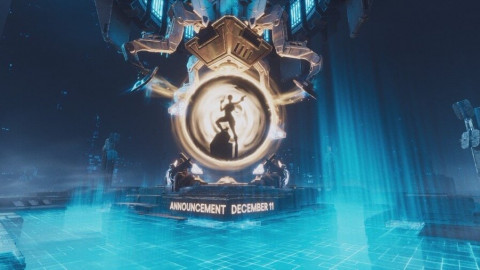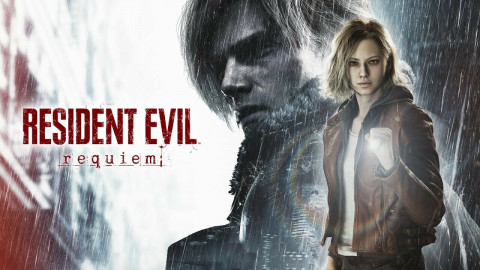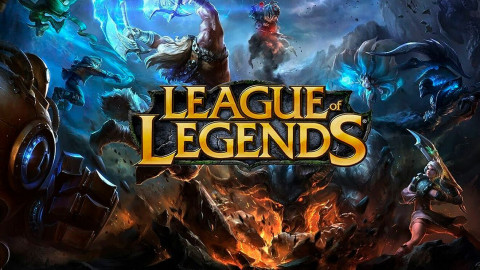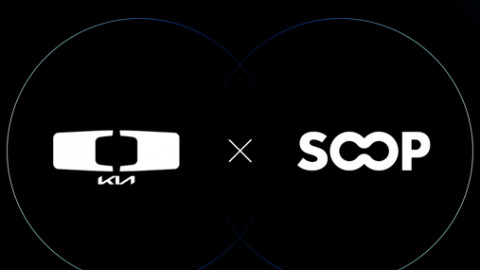An aggressive infighter that has to attack constantly
Terry’s attack stat is the highest among all fighters, with 4,160. However, his defense stat is the lowest, at 1,954. As you can see through his stats, Terry is a fighter that is extremely offensive. He’s a high-risk-high-return fighter that loses the flow the second you allow a connection. When you play Terry, you have to play thinking that you’ll be the only one attacking.

The start of infinite combos, ‘basic attack’ deep analysis
Counter difficulty between 1st-3rd hit: Basic attack, all skill attack - easy
Counter difficulty between 3rd-4th hit: Basic attack, all skill attack - very easy
| Short blast (1st strike) → Spinning kick (2nd strike) → Vertical upper kick (3rd strike) → Diagonal downblow (4th strike) |
Terry is a fighter that can connect infinite combos when the opponent doesn’t have emergency dodge and escape. Among those fighters, he has the best stats, and his basic attacks are one of the best as well. His first two attacks can allow a counter as they can use emergency dodge, but his advantage is that he has a long range, so he can attack first. Terry’s third attack airbornes an opponent, so he can stably connect skills.

▲ The range of the 1st hit is long, so attacking first is possible.
|
- Short blast attack (1st strike) can hit an opponent that’s down - When attacking with the short blast attack (1st strike) from its max range, the opponent’s escape doesn’t reach - Vertical upper kick (3rd strike) airbornes the opponent - The opponent can dodge while they’re airborne from the vertical upper kick (3rd strike), so it’s unsuitable for airborne combos - After the diagonal downblow (4th strike), the opponent can use dodge, so connecting combos after the vertical upper kick (3rd strike) is recommended |

During an airborne combo, it’s better not to use basic attacks. This is because while the opponent is airborne from being hit by the vertical upper kick (3rd strike), there’s a short period where they can use dodge and get away. If the opponent is airborne, it’s better to use a quick attack (1st strike) and connect skills afterward.

Connecting basic attacks in actual fights
|
If you use your 1st, 2nd hits, the opponent can parry with escape - The opponent can use emergency dodge before the vertical upper kick (3rd strike) - It is difficult to use escape right after the spinning kick (2nd strike) and vertical upper kick (3rd strike) |

▲ Opponents can get away with emergency dodge before you can connect the vertical upper kick (3rd strike).

In-depth analysis of the Q skill - Power Geyser
Uncounterable
|
- Creates a burst of fire in front of Terry - Can hit an opponent that is down, and the hit range is high, so it’s good to connect airborne combos - The blast attack is valid for quite long even after the skill effect disappears - If you hold the skill button to fill up the charge gauge, a MAX Power Geyser is activated - The MAX Power Geyser creates three fire bursts that pursue the opponent’s position |
Terry’s Power Geyser is categorized as a charging skill, like King and Yuri. If you hold the button, the charge gauge fills up. It’s a unique skill that attacks three times based on the opponent’s position if you let go when the gauge is at max. Since the charge time is quite long, the performance and damage of the Power Geyser are one of the best. If you press the skill for a short time like other normal skills, Terry creates a high-fire burst in front of him.
If you hit the Power Geyser from max range, the opponent’s escape can’t reach you, so you can connect combos safely. Since it can hit high targets, you can also connect airborne combos comfortably. The attack is valid for about 0.5 seconds after the effect is gone. It lasts longer than expected, so it can be used like a wall to nullify an opponent’s blast attack or keep them from approaching.


Example of using Power Geyser (Q) in actual fights
Uncounterable
|
- Utilize the fact that the attack is valid for a while, so the opponent can counter a bit later after the skill effect is gone - Control the distance thinking the opponent can get away backward using emergency dodge when they’re not cornered - The MAX Power Geyser attacks the opponent three times while pursuing them, so you can induce them to use emergency dodge or escape |
If the opponent is too aware of your Power Geyser, you can induce them to dodge by faking it with your basic attack short blast (1st strike), whose animation is the same, and then pursuing them with other skills. There’s a difference between the two animations — when you use Power Geyser, your hand shines, but the short blast of the basic attack doesn’t. However, it’s very difficult to identify the difference in a short time and dodge properly.
Power Geyser is a skill to contain your opponent so that they can’t approach easily and to keep the initiative. The opponent would seek a counter when your Power Geyser is on cooldown, and if they’re hit by it, they try to get away from Terry’s following skill connections by getting far away.
If there’s some distance between you and your opponent, it’s good to induce the opponent’s escape or emergency dodge with a MAX Power Geyser, then approach them into your skill range to play mind games.


In-depth analysis of the W skill - Power Charge EX
Counter difficulty between 1st-2nd hit: Basic attack, strike attack - easy / other attacks - very difficult
|
- It hits while charging quite a long distance (about half the screen), and generates a hit light pillar When hit, the opponent is airborne (emergency dodge unable) - The last strike of the light pillar pulls down the opponent (drop) - Motion cancel is possible right after the light pillar is generated - Charge and light pillar cancels blast attacks - Counterable due to the small gap between the charge and light pillar |
Power Charge is an exceptional charge skill that advances about half the screen. The skill animation is fast as well, so if you use it immediately after the game starts, it reaches the opponent. The charge motion even cancels the opponent’s blast attack, so you can gain the initiative against an opponent that uses blast attacks by using Power Charge. Also, if the opponent is hit by Power Strike, they are airborne, so they can’t use emergency dodge, and you can connect combos stably.
The light pillar that rises after the charge is a multi-hit attack, so its duration is quite long. Like the charge motion, the light pillar cancels blast attacks. However, the last strike of the light pillar pulls the opponent down, so there’s a small gap. At that moment, the opponent can use dodge. If you want to connect combos, you must cancel it with a basic attack or other skills. When you cancel it, the light pillar’s strikes disappear immediately.

Example of using Power Charge EX (W) in actual fights
Counter difficulty between 1st-2nd hit: Basic attack, strike attack - easy / other attacks - very difficult
|
- It is important to nullify a blast attack to penetrate through the blast attack to attack first - To extend the airborne combo, cancel before the last strike of the light pillar - Be aware that if the opponent guards the charge, they can counter with a basic attack or a skill that has quick motions - Know that the opponent can escape before the light pillar appears |
Power Charge has great attack attributes, but the better the opponent, the harder it gets to use. This is because the gap between the charge and light pillar is big. If the charge is guarded, there’s a good chance of being countered before the light pillar. It is important to make your opponent anxious by canceling the light pillar right after the charge motion with a basic attack to reduce the opponent’s guard gauge or using the Buster Wolf (E) skill. This is to give pressure on the opponent by showing that you know the timing of their counter and attacking them.


In-depth analysis of the E skill - Buster Wolf
Counter difficulty between 1st-2nd hit: Basic attack, quick strike attacks - very difficult / other attacks - mostly uncounterable
|
- Extra punch after a short charging strike - Motion canceling is possible after the extra strike - Standing effect if hit landed on an airborne opponent - There is a short gap between 1st-2nd hit which is counterable |
Buster Wolf is a skill that strikes while charging a short distance. It may seem like a backward-compatible skill for Power Charge, but the gap between the charge strike and extra strike is short, so it can be used rather safely. The important point is that if you hit an airborne opponent with it, you can paralyze them in a standing state, and the opponent would have to use their emergency dodge. If they don’t have emergency dodge, it’s good to use as a connecting skill between basic attacks and other skills.

Example of using Buster Wolf (E) in actual fights
Counter difficulty between 1st-2nd hit: Basic attack, quick strike attacks - very difficult / other attacks - mostly uncounterable
|
- There’s 1 extra strike, so there’s no damage loss even if you cancel the motion - The gap between the charging attack and extra strike is short, so it’s less likely to allow a counter - If opponents uses emergency dodge backwards, extra combos can’t be connected |
The gap to counter between the charging attack and the extra strike is very short, so it’s difficult to time when to counter as much as Kyo or Iori’s charging grapple skill (E). Even for the best players, if they miss the timing and fail to counter, they would have to use emergency dodge or escape. They would allow following combos if they don’t. By using this, it’s best when used to induce your opponent to use defensive skills.

In-depth analysis of the Finisher - Rising Force (R)
Escaping right after being hit by charge attack - escaping possible by dodging forward
|
- A strike-type finisher that dashes through about 80% of the screen and finishes with a vertical upper kick - Double finisher possible in MAX mode if you have at least 3.8 PG |
As the attack range is very long — it dashes through about 80% of the screen, so it’s almost impossible to avoid Rising Force by getting further away. The animation time is short, so if you have at least 3.8 PG, you can use a double finisher in MAX mode. If you use Power Geyser between the two finishers, you can deal even more damage.

Example of using Rising Force (R) in actual fights
Escaping right after being hit by charge attack - escaping possible by dodging forward
|
- It’s important to connect airborne combos after the finisher as the opponent is high in the air - To connect airborne combos, connect Power Geyser, Power Charge - The opponent can escape by using escape and dodge simultaneously after being hit by the charge attack - If the opponent uses escape after the vertical upper kick, you aren’t hit |
Rising Force is a finisher that has multiple hits with the vertical upper kick that comes after the charging attack, so the opponent can get away by using escape and dodge right after being hit by the charge attack. If the opponent gets away this way, you lose initiative, so it’s important to gain distance by using dodge or offsetting the opponent’s skill by predicting it and using Power Charge.

In-depth analysis of the Ultimate (F) - Trinity Geyser
|
- Hits the opponent with five huge fire pillars - When using the ultimate, Terry and his opponent’s positions are adjusted to both ends of the screen - When the opponent is cornered when using it, the distance between the two fighters are maintained |
Like most ultimates, it takes a while for the opponent to get up after getting hit, so Terry can continue his attack safely. Unless it’s used after cornering the opponent, the positions of the two fighters are adjusted to both ends of the screen, so it’s good to use Power Geyser as the following skill.
As Terry has very high attack attributes, the damage of the ultimate skill is also very high. It is very likely that the opponent is in a near-K.O situation when you are using the ultimate. Usually, the opponent would use their dodge forward or use escape. If they approach by dodging forward, use Power Geyser, and if they try to escape to wait and see, use MAX Power Geyser.


Example of using Trinity Geyser (F) in actual fights
|
- The Power Geyser charging attack after the ultimate is a pattern that gets hit even when they know it’s coming - If you use the ultimate in a corner, guard the opponent’s escape and attack with Power Charge |
There’s almost no way to stop Terry from charging his Power Geyser after the ultimate. Reacting defensively by dodging and guarding quickly is the best. If the opponent quickly guarded after dodging, charge the Power Geyser as long as you can since Power Geyser’s cooldown is 7 seconds — if you use it as late as possible, you can use it again in 3 seconds.
Like all other ultimates, if they have at least 4.3 PGs, they can counter immediately after being hit by the ultimate by using escape, MAX mode, and ultimate.

Combos utilized in actual fights ‘Basic combos’
|
Power Charge - Power Geyser - Buster Wolf Power Charge - 1 Basic Attack - Power Geyser - 1 Basic Attack - Buster Wolf Combo - Basic Attack |
When you’re just a beginner who’s not used to controlling Terry, attack first using Power Charge and connect it with Power Geyser and Buster Wolf. It’s simply connecting skills. The only way for your opponent to evade this is escape, so you can stably connect combos.
If you’ve become used to using the skill combos, try to increase damage by mixing a basic attack (short blast) between the skills. The damage of 1 basic attack can look small, but if it’s cumulated, it isn’t ignorable. Also, you can charge PG faster, so you can K.O. your opponent faster by using your ultimate earlier.

‘Intensive Combos’ — To use when opponent doesn’t have emergency dodge
| 3 Basic attacks - Buster Wolf - 2 Basic attacks - Power Geyser - 3 Basic Attacks - Power Charge (Repeat from beginning afterward) |
If the opponent doesn’t have escape or emergency dodge, you can gain the upper hand by playing an almost infinite combo. The key point is to mix 2-3 basic attacks between the skills to earn some time for the cooldown. Use Power Geyser after two basic attacks, and with Power Charge and Buster Wolf, use three basic attacks. The order of Power Charge and Buster Wolf can be changed.
When Terry has his opponent airborne, he can’t add many basic attacks. Therefore, you shouldn’t use the 4th strike where it pounds the opponent to the ground. It is important to connect the combo by using Buster Wolf when the opponent is about to hit the ground and making them into a standing paralysis state. Mixing the basic attacks helps you charge PG faster.

Sort by:
Comments :0







